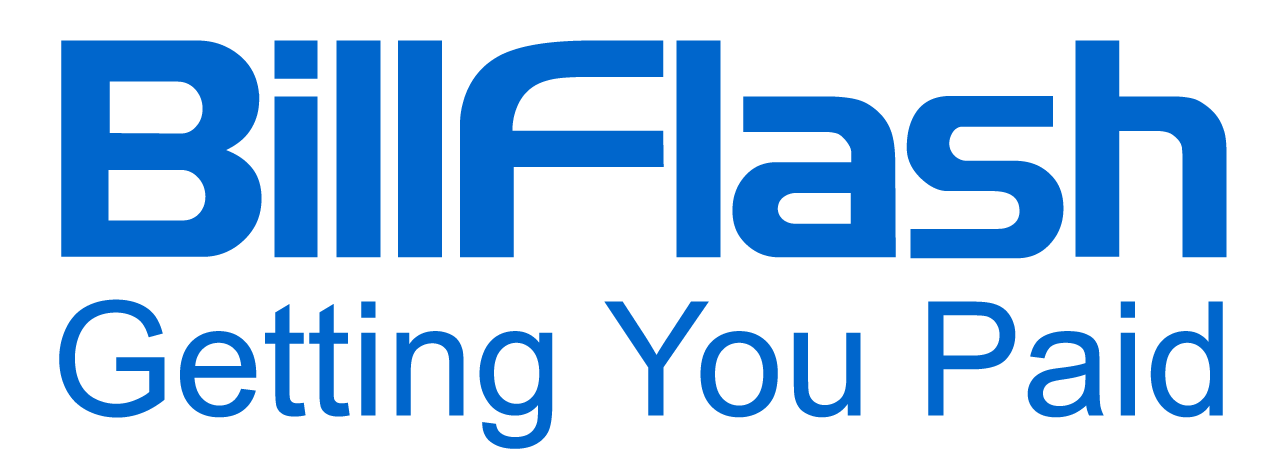Discover how practices can stay competitive in the evolving healthcare landscape through flexible patient billing and payment solutions.
Today's healthcare landscape is undergoing a massive transformation. Cutting-edge technology and changing patient expectations are reshaping care delivery. Meanwhile, outdated billing practices and frustrating financial interactions are driving patients away. Today's patients don't just want treatment—they expect healthcare to feel as effortless as ordering takeout or booking a ride. However, clinics and hospitals face various challenges: rising operational costs, shrinking reimbursements, and administrative workloads that burn out staff and strain trust. It's a perfect storm threatening the future of care.
Challenges Facing Medical Practices in Today's Healthcare Landscape
Patients now view healthcare through a consumer lens. According to Bain & Co., 65% of healthcare consumers value convenience as much as the quality of care they receive. This pushes clinics and hospitals to rethink how they connect with patients, but many struggle to keep up. A recent survey highlights this gap, with 41% of respondents saying their providers aren't clear enough about costs. Practices need to adapt to meet these changing demands in the healthcare landscape. This includes offering clearer pricing, smoother services, and digital solutions that enhance the patient experience.
Providers are also facing another challenge: shrinking reimbursements that put even more pressure on their bottom line. Medicare reimbursements dropped from $33.29 in 2024 to $32.35 in 2025. This decrease continues a trend of declining Medicare reimbursements, squeezing margins for practices already struggling with costs outpacing revenue. A 2022 Medical Group Management Association poll revealed that 90% of medical practices reported costs outpacing revenues.
But the financial strain isn't the only challenge in today's healthcare landscape—heavier administrative burdens also add to the pressure. According to the American Medical Association, physicians in outpatient specialties spend nearly six hours on EHR tasks for every eight hours of scheduled patient time. Dr. Christine A. Sinsky, lead author of the study, addressed that this time-intensive process takes away from patient care and contributes to professional burnout. Staff aren't immune either—many cite administrative work as a top source of stress, hurting productivity and job satisfaction.

The Role of Technology in the Modern Healthcare Landscape
To stay competitive in today's healthcare landscape, medical practices must embrace modern tools that simplify their work, enhance patients' experiences, and improve the bottom line. Automation, for example, has become a game-changer for tackling the mountain of administrative work. By automating tasks like billing and payment processing, practices can eliminate inefficiencies and free up more time to focus on what matters—their patients.
The cost of maintaining outdated processes is only growing. However, many healthcare systems are still being held back by manual, time-consuming processes. A CAQH report revealed that healthcare administrative spending increased by 50% in 2022. The industry spent $82.7 billion more on nine key administrative functions than the previous year.
The report also highlighted that automating transactions like prior authorization could save the industry $16.4 billion annually. This increase in spending highlights the importance of finding smarter, more efficient solutions. Yet progress lags. Right now, only 31% of prior authorization requests are fully electronic. There’s plenty of room for growth, not just in prior authorizations—modernizing patient payment methods is equally important.
The Importance of Flexible Billing and Payment Options in Today's Healthcare Landscape
Flexible billing and payment options, such as online portals, payment plans, and mobile payments, are not only convenient but they're what patients want and help practices collect payments faster. While the shift toward digital communication is undeniable—56% of patients now prefer digital billing communications like email and text over traditional paper statements—it's important to recognize that many patients still value receiving paper statements, particularly when they include QR codes linking directly to online payment portals.
Transparent billing through text, email, or mailed statements with QR codes improves clarity, boosts patient satisfaction, and speeds up payments. It's crucial to connect billing systems with electronic health records (EHR) and practice management software to make life easier for providers, staff, and patients.
BillFlash, for instance, integrates with over 100 billing applications. This kind of seamless connection means real-time updates on patient accounts, fewer billing errors, and smoother operations, no matter which EHR or EMR software a practice uses. It's a win-win for everyone involved. However, streamlining operations is just one piece of the healthcare landscape puzzle. To truly stand out, practices need to rethink their approach to billing and payments with a patient-first mindset.
Strategies to Enhance Competitiveness With Billing and Payment Solutions
A patient-first billing experience begins with clarity. Simplifying statements by replacing medical jargon with language that is easier to understand (e.g., lab work instead of comprehensive metabolic panel) can reduce confusion and disputes. Clear breakdowns of services and costs empower patients to understand their financial responsibilities. Patients who feel confident about their charges are more likely to pay on time. This reduces the need for staff follow-ups and improves cash flow. It also builds stronger patient-provider relationships and sets the foundation for a positive financial experience.
Equally important in today's healthcare landscape is flexibility. Offering multiple payment options—including debit/credit cards, checks, phone payments, payment plans, Apple Pay, Google Pay, and online portals—ensures patients can choose the method that aligns with their preferences. Payment portals like PayWoot.com demonstrate the demand for this flexibility: 62% of patients now use online portals for medical payments, prioritizing convenience and security. Patients are more likely to pay promptly and in full when they have payment options that fit their preferences.
The Role of Automation
But clarity and flexibility aren't enough—automation can take the healthcare landscape to the next level. By implementing options like AutoPay and AutoReminders, practices can significantly streamline the billing cycle. Research shows that 44% of healthcare consumers pay medical bills faster when notified via digital or phone alerts. Meanwhile, 49% of patients express willingness to pay by text if given the option.
With AutoPay, patients can conveniently have their bills automatically paid in full each time a new bill is sent, reducing the likelihood of missed payments. These automated solutions simplify the process and encourage faster, more consistent payments.
These solutions save staff time and drive results, with providers seeing up to a 60% increase in customer payments. However, even with proactive strategies, some accounts require collections. Integrating compassionate collections services ensures past-due balances are resolved without sacrificing patient relationships. This balance is critical because 90% of patients base their loyalty on the financial experience, and 63% would switch providers after a negative payment interaction.
To mitigate risks, adopt a patient-centered approach that automatically flags accounts for collections during routine billing reviews. Partnering with an integrated collections service ensures these interactions remain professional and positive, with bilingual recovery specialists trained to communicate empathetically and respectfully. This preserves trust while improving collection rates, ensuring that resolving overdue balances doesn't come at the cost of patient loyalty.
These modern healthcare landscape strategies create a solid patient financial experience that benefits patients and practices. By prioritizing clarity, flexibility, automation, and empathy—and fostering seamless, competent communication—providers can reduce administrative burdens, accelerate revenue, and build lasting patient loyalty.

Stay Competitive With BillFlash
BillFlash equips medical practices with comprehensive billing, payment, and collections solutions tailored to today's demanding healthcare landscape. By addressing operational efficiency and patient satisfaction, our tools empower providers to streamline workflows. Key features include:
Automate Billing Processes
BillFlash eliminates manual bottlenecks with automated billing tools that send bill notifications via mail, email, and text. We enhance the patient experience by generating branded, customizable, full-color statements with QR codes for instant online portal access and customizable PDF inserts for educational or promotional content.
Our PreBill solution streamlines the billing process by providing upfront cost estimates before the patient's visit, reducing disputes and cultivating trust. Automated batch processing efficiently manages large billing cycles for high-volume needs, allowing your staff to focus on patient care. Together, these features create a unified workflow that speeds up payments, minimizes errors, and reduces patient frustration—all while saving your staff valuable time.
Flexible Payment Options
Recognizing that financial flexibility drives patient retention, BillFlash supports the payment methods patients expect: debit/credit cards, mobile wallets (Apple Pay, Google Pay), online portals, and in-office, mail, and phone payments.
BillFlash FlexPay offers a lifeline for those needing further assistance: a 90% approval rate and a 0% interest financing option for all approved patients. FlexPay allows providers to get paid immediately while offering patients the flexibility to pay their balance in monthly installments. With no hard credit checks and a quick online application, FlexPay keeps the process simple and stress-free. This healthcare landscape solution directly addresses the financial anxiety that leads 1 in 4 patients to delay care, improving accessibility and satisfaction.
Seamless Integration
Compatibility is critical in fragmented healthcare ecosystems. BillFlash integrates with over 100 billing applications, ensuring real-time synchronization across platforms. This integration eliminates duplicative data entry, reduces errors, and creates a unified experience for staff—whether managing payments, updating patient records, or reviewing collections. By streamlining workflows, we help practices operate more efficiently and focus on what matters most: patient care.
Faster Payments
Speed is central to BillFlash. With PreBill, practices can send upfront cost estimates to patients before their visit. This helps set clear financial expectations early and reduces post-visit disputes. Once bills are finalized, patients receive a secure eBill link via email or text to our payment portal to view and pay their bill, ensuring a HIPAA-compliant interaction.
For mailed statements, QR codes on the statement make it simple to jump from paper to digital in seconds. On the other hand, AutoReminders sends up to three automatic email or text reminders each month until balances are paid. This enhances efficiency by encouraging timely payments while maintaining positive patient relationships.
Enhanced Patient Experience
Every interaction with a patient reinforces your practice's brand. Customizable mailed statements with personalized messaging and color schemes create a professional image that reflects your practice’s attention to detail. Itemized bills using plain language reduce confusion, while BillFlash PreBill's upfront estimates let patients plan financially before visits.
But the modern healthcare landscape is not just about clarity—it's also about convenience. BillFlash transforms billing from a pain point into a loyalty-building opportunity. Consider this: 68% of patients say they're more likely to return to a provider who educates them.
You promote understanding by offering patients clear education through PreBill estimates, plain-language statements, and AutoReminders. When your patients feel educated, they won't just settle their bills—they will trust your practice and become loyal patients.
Integrated Collections Services
When accounts require collections, BillFlash ensures respect and compliance guide the process. Our Recovery Specialists are licensed in all 50 states, with 75% being bilingual, helping us better serve diverse patient populations. Each specialist undergoes ongoing compliance training and uses empathetic communication to maintain positive patient relationships. Providers remain in full control, setting rules for flagged accounts, approving which accounts are sent, and withdrawing accounts at any time.

Elevate Your Billing Strategy With BillFlash
Providers must adapt effectively as patient expectations evolve alongside billing challenges and administrative burdens within practices. In today's healthcare landscape, outdated billing systems won't just be inefficient—they will hurt patient retention and financial stability. This means modernizing your revenue cycle is no longer optional.
BillFlash helps practices turn billing into a strategic asset. Designed for healthcare's unique challenges, our tools streamline workflows while elevating transparency. This combination is proven to accelerate cash flow and strengthen patient relationships. By adding BillFlash's tools to the billing strategy, practices gain more than efficiency. They unlock a patient-centric billing experience where clear cost estimates, flexible payment options, and compassionate collections build trust.
This focus—operational excellence combined with empathy—is how forward-thinking providers differentiate themselves in a competitive healthcare landscape.
Ready to future-proof your practice? Schedule a BillFlash demo today and see how our comprehensive billing, payment, and collection software can help your practice thrive in this ever-changing healthcare landscape.

